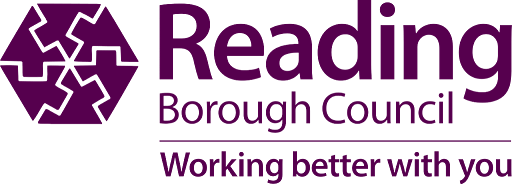
Borough and Council carbon emissions fall as new climate strategy set to be adopted
- Council’s carbon footprint cut by 74.3% since 2008/09 and more projects are under way to increase the pace of progress
- Borough emissions down by 57% since 2005 – the 12th biggest reduction in the country
- New Reading Climate Emergency Strategy and Action Plan 2025-30 recommended for adoption by the Council
Reductions in the Council’s greenhouse gas emissions show it is leading by example in Reading’s aim to become net zero.
A new report shows that the Council’s carbon footprint has been cut by 74.3% since 2008/09.
Reading borough has also continued to see a fall in its carbon emissions with a 57% reduction since the 2005 baseline.
The figures are being reported to members of the Council’s Strategic Environment, Planning and Transport (SEPT) committee, who are also being asked to adopt the new Reading Climate Emergency Strategy and Action Plan 2025-30 on behalf of the authority (https://reading.moderngov.co.uk/ieListDocuments.aspx?CId=139&MId=5706).
The Council’s greenhouse gas emissions have been reported annually since 2008/09 and although they only represent 1.2% of the borough’s emissions, they show how the authority is leading by example.
And there are a number of projects under way which should result in further improvements:
- The Hexagon: Ground-source heat pumps are being installed for use at the Hexagon and new Studio theatre, which is currently under construction, using naturally occurring warm water from underground.
- Civic Centre: Gas boilers have been replaced with heat pumps to supply sustainable heating and cooling systems. The redevelopment of the Civic will see the opening of a new modern library and disposal of the old energy-inefficient Central Library building.
- Bennet Road: On the way to creating a zero-carbon depot, gas boilers have already been replaced with air source heat pumps and solar panels and a fleet of electric refuse lorries have been purchased. The next stage will be the installation of solar clad canopies in car parks.
The Council has also been a participant in the Green Events Code of Practice national trial, making festivals more sustainable, and is now taking part in phase two.
In the summer, it was confirmed that Reading had retained its place on the Carbon Disclosure Project (CDP) ‘A’ list of cities taking bold climate action, one of only 122 cities across the world and 20 in the UK to achieve this level.
The Council declared a climate emergency in 2019 and the Reading Climate Change Partnership (RCCP), of which the Council is an active partner, set out a roadmap to work towards achieving a net zero carbon Reading.
The annual report on the RCCP’s Reading Climate Emergency Strategy 2020-25 shows that the borough’s emissions have fallen by 57.3% since 2005, which is the 12th largest reduction out of 374 UK local authority areas.
Reading’s per capita emissions remain the lowest in Berkshire and are lower that the south-east and UK average.
The RCCP carried out a year of climate engagement to develop the new Reading Climate Emergency Strategy 2025-30 last year and it features the six key themes of: energy and heat; travel and transport; water; beyond waste; nature and open spaces and food.
Members of the SEPT committee will be asked to adopt the new strategy on behalf of the Council at the meeting on 19 November.
Cllr John Ennis, Lead Councillor for Climate Strategy and Transport, said:
“Reading is performing well in terms of reducing carbon emissions, both as a borough and as a Council.
“The borough has seen the 12th largest reduction in emissions out of 374 UK local authorities since 2005 and has lower per capita emissions than the south-east and UK averages.
“The Council’s carbon footprint has fallen by 74.3% since 2008/09 and there are some major projects taking place at the Hexagon, Civic Centre and Bennet Road which should see the pace of improvements pick up even more.
“As well as being better for the environment, these projects help improve air quality for residents and save the Council, and therefore Council tax payer, money on fuel and energy bills.
“Thank you to all the residents, businesses, charities and community organisations in Reading who play an important role in improving our environment. It is also important to note that the Council’s emissions only account for 1.2% of all of Reading’s, which is why net zero can only be achieved through a sustained collective effort.
“We have seen the effects of more regular extreme weather caused by climate change both globally and locally and recognise that there is still much to do. But we have seen that by working together we really can make a difference.”
